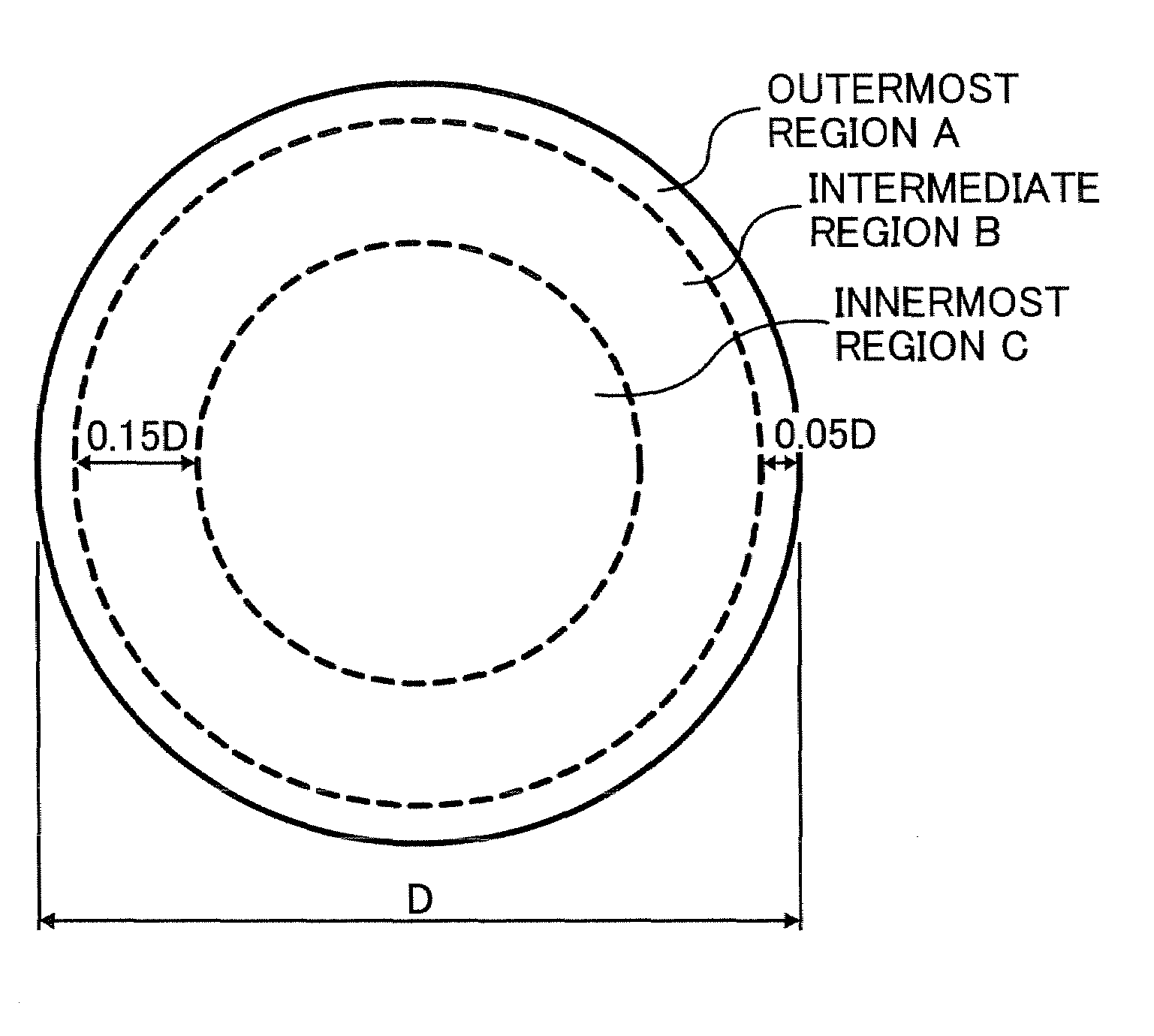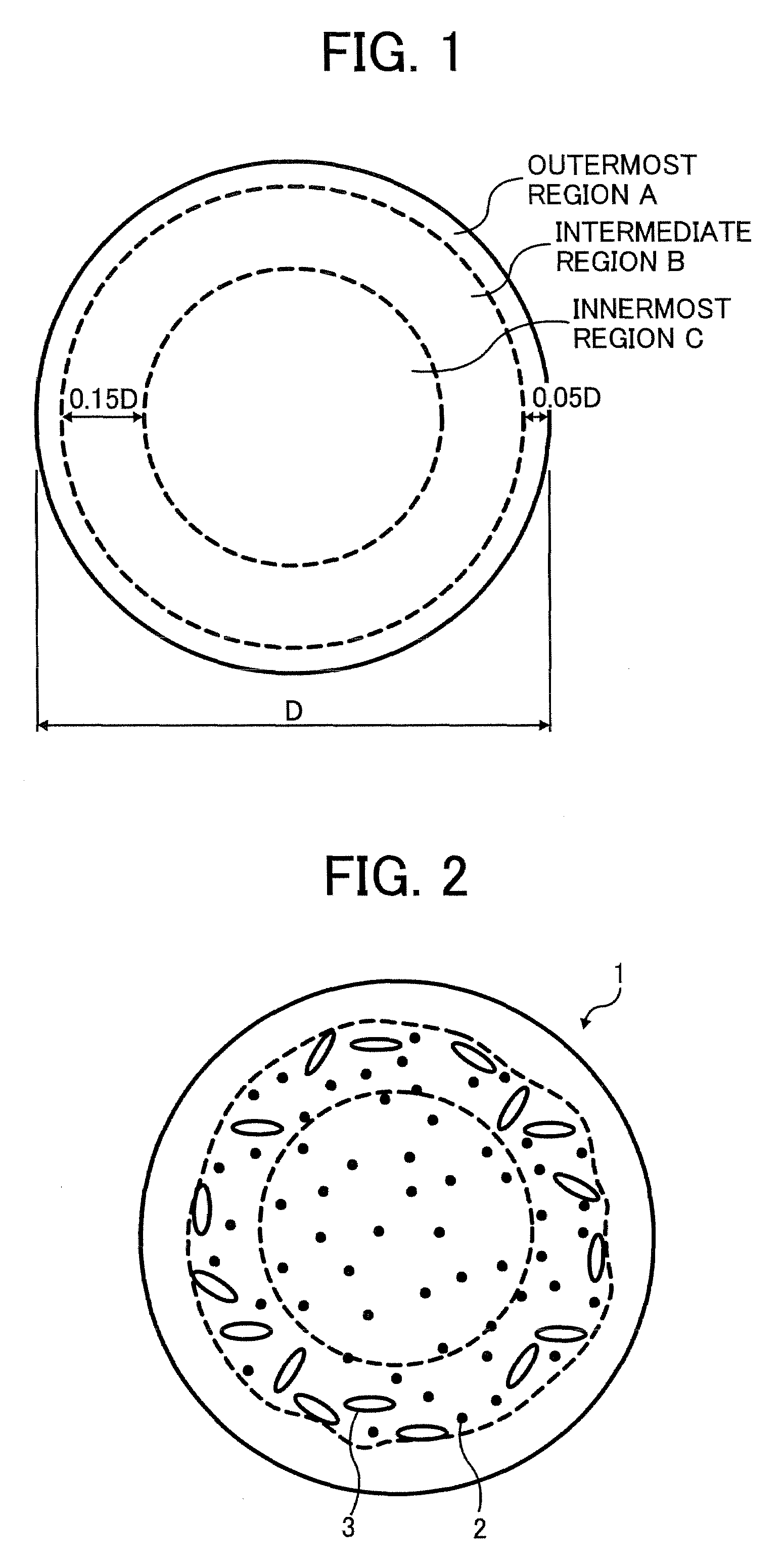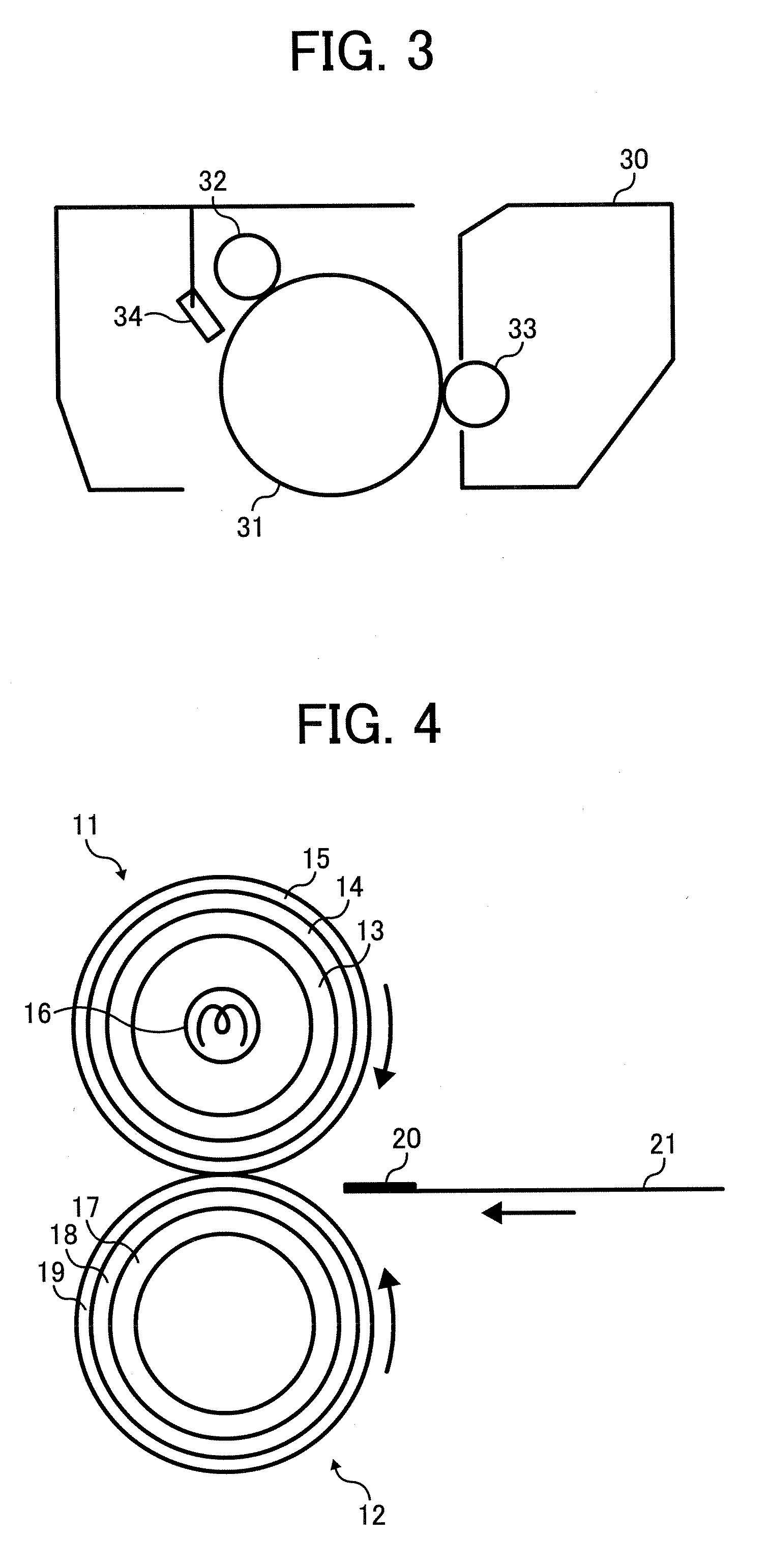Toner and method of preparing the toner
a technology of toner and charge controlling agent, applied in the field of toner, can solve the problems of deterioration of chargeability of the resultant toner, insufficient methods of adhesion of the charge controlling agent, and high cost of the charge controlling agent, and achieve the effect of stable chargeability and high quality
- Summary
- Abstract
- Description
- Claims
- Application Information
AI Technical Summary
Benefits of technology
Problems solved by technology
Method used
Image
Examples
example 1
Preparation of Colorant / Wax Dispersion
[0232]In a reaction vessel equipped with a stirrer and a thermometer, 545 parts of the polyester (P-1), 181 parts of a wax (A), and 1450 parts of an ethyl acetate / methyl ethyl ketone mixture (40 / 60 by volume) are mixed and the mixture is heated to 80° C. while agitated. After being heated at 80° C. for 5 hours, the mixture is cooled to 30° C. over a period of 1 hour. Then 500 parts of the master batch (1) and 100 parts of the ethyl acetate / methyl ethyl ketone mixture (40 / 60 by volume) are added to the vessel, and the mixture is agitated for 1 hour to prepare a raw material mixture liquid (1).
[0233]Then 1500 parts of the raw material mixture liquid (1) are subjected to a dispersion treatment using a bead mill (ULTRAVISCOMILL (trademark) from Aimex Co., Ltd.). The dispersing conditions are as follows.
[0234]Liquid feeding speed: 1 kg / hour
[0235]Peripheral speed of disc: 6 m / sec
[0236]Dispersion media: zirconia beads with a diameter of 0.5 mm
[0237]Fil...
example 2
Preparation of Colorant / Wax Dispersion
[0255]In a reaction vessel equipped with a stirrer and a thermometer, 580 parts of the polyester (P-1), 130 parts of a wax (B), and 1400 parts of an ethyl acetate / methyl ethyl ketone mixture (40 / 60 by volume) are mixed and the mixture is heated to 80° C. while agitated. After being heated at 80° C. for 5 hours, the mixture is cooled to 30° C. over a period of 1 hour. Then 500 parts of the master batch (1) and 100 parts of the ethyl acetate / methyl ethyl ketone mixture (40 / 60 by volume) are added to the vessel, and the mixture is agitated for 1 hour to prepare a raw material mixture liquid (2).
[0256]Then 1500 parts of the raw material mixture liquid (2) are subjected to a dispersion treatment under the same condition as Example 1.
[0257]Then 425 parts of the polyester (P-1) and 230 parts of the ethyl acetate / methyl ethyl ketone mixture (40 / 60 by volume) are added thereto. The mixture is subjected to a dispersion treatment using the bead mill. The d...
example 3
Preparation of Colorant / Wax Dispersion
[0266]In a reaction vessel equipped with a stirrer and a thermometer, 516 parts of the polyester (P-2), 100 parts of a wax (A), and 1300 parts of an ethyl acetate / methyl ethyl ketone mixture (40 / 60 by volume) are mixed and the mixture is heated to 80° C. while agitated. After being heated at 80° C. for 5 hours, the mixture is cooled to 30° C. over a period of 1 hour. Then 500 parts of the master batch (1) and 100 parts of the ethyl acetate / methyl ethyl ketone mixture (40 / 60 by volume) are added to the vessel, and the mixture is agitated for 1 hour to prepare a raw material mixture liquid (3).
[0267]Then 1500 parts of the raw material mixture liquid (3) are subjected to a dispersion treatment under the same condition as Example 1.
[0268]Then 425 parts of the polyester (P-2) and 230 parts of the ethyl acetate / methyl ethyl ketone mixture (40 / 60 by volume) are added thereto. The mixture is subjected to a dispersion treatment using the bead mill. The d...
PUM
| Property | Measurement | Unit |
|---|---|---|
| volume average particle diameter | aaaaa | aaaaa |
| particle diameter | aaaaa | aaaaa |
| temperature | aaaaa | aaaaa |
Abstract
Description
Claims
Application Information
 Login to View More
Login to View More - R&D
- Intellectual Property
- Life Sciences
- Materials
- Tech Scout
- Unparalleled Data Quality
- Higher Quality Content
- 60% Fewer Hallucinations
Browse by: Latest US Patents, China's latest patents, Technical Efficacy Thesaurus, Application Domain, Technology Topic, Popular Technical Reports.
© 2025 PatSnap. All rights reserved.Legal|Privacy policy|Modern Slavery Act Transparency Statement|Sitemap|About US| Contact US: help@patsnap.com



